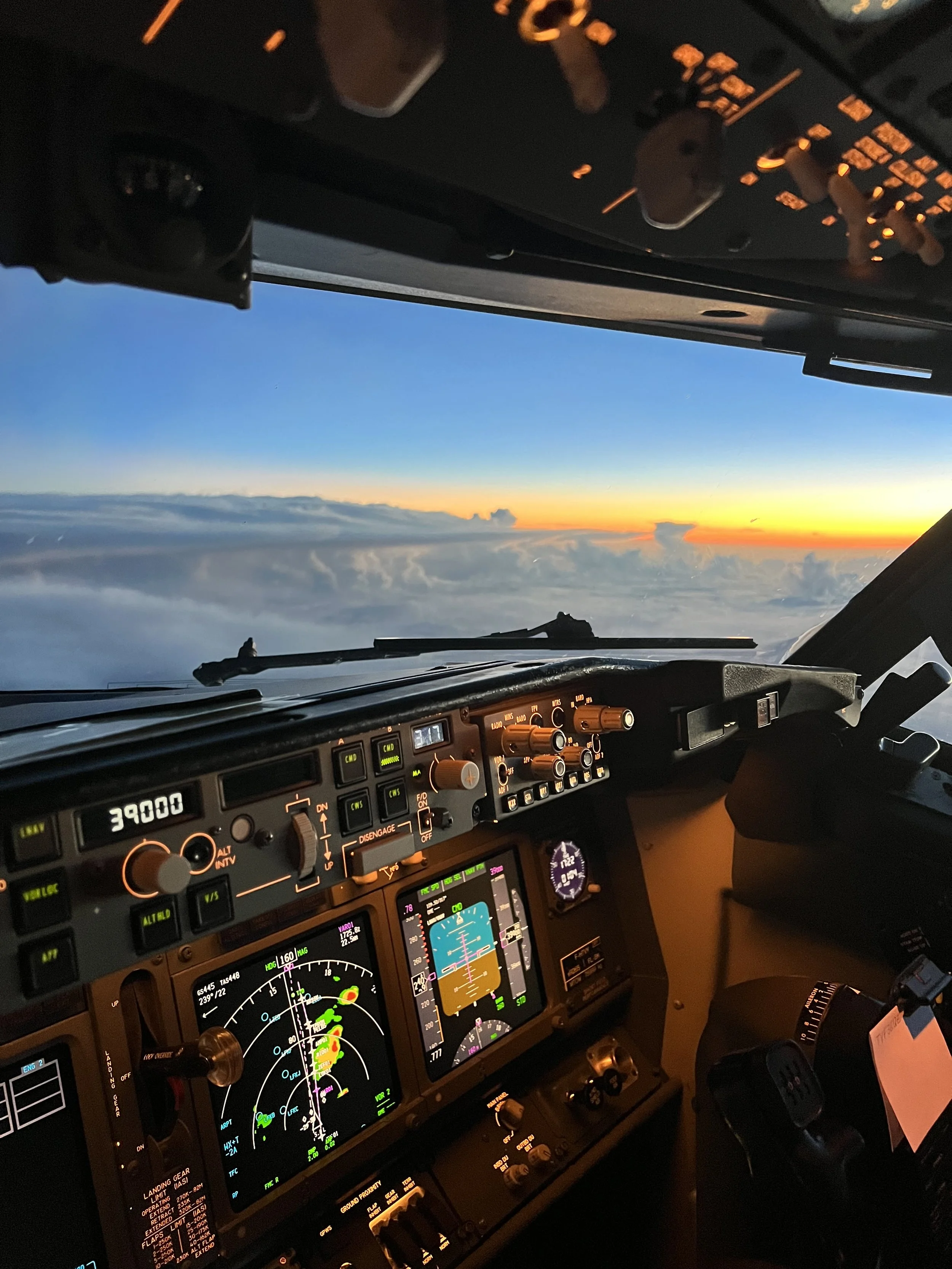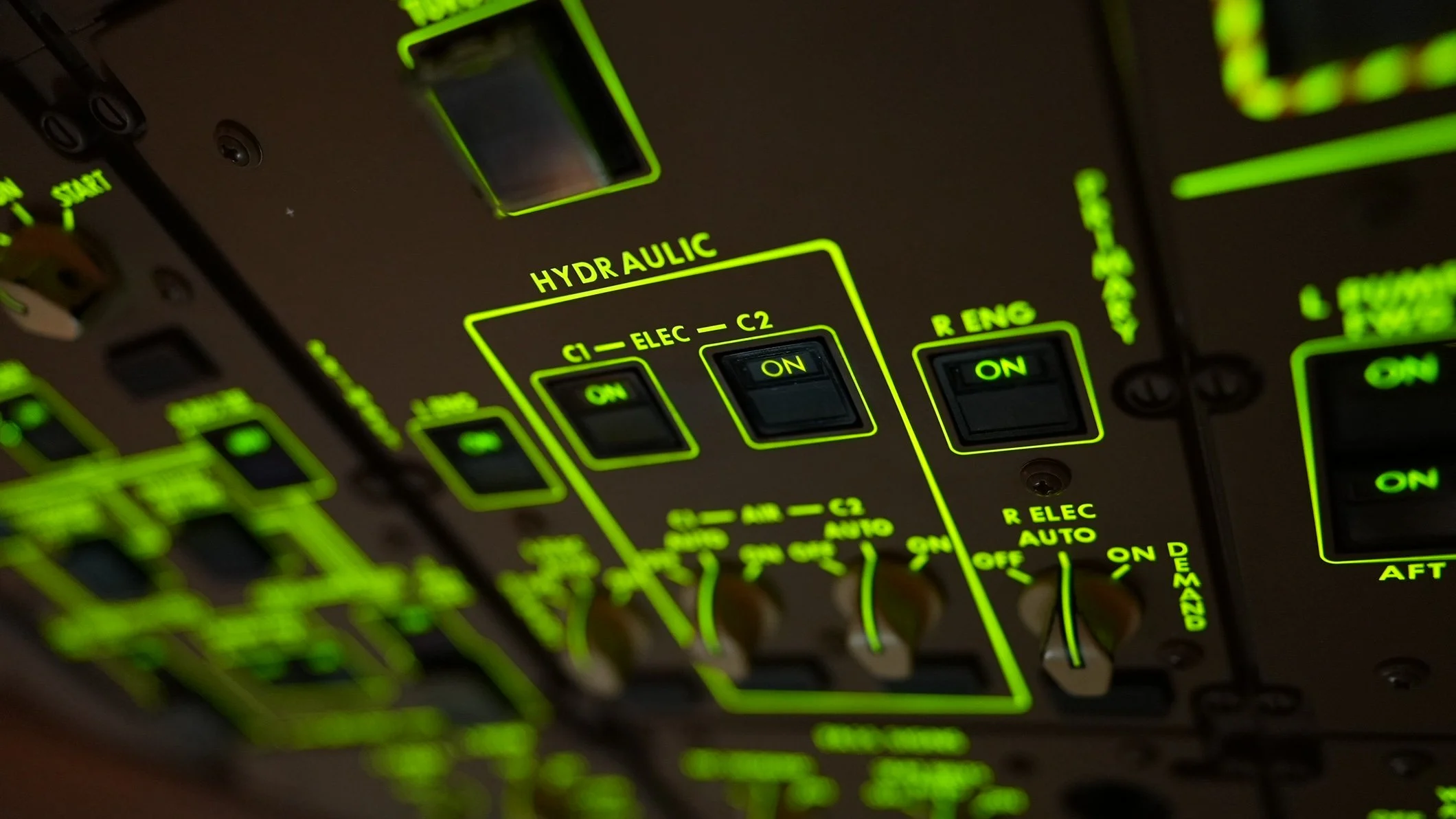My Journey ✈️
How I Became an Airline Captain: The ENAC Journey
Today I fly as an airline captain. But it wasn’t always clear how to get there. Once, I was just like many of you: a curious teenager, barely familiar with aviation, with no idea how to become a pilot.
I was 16 when I first became interested in the profession. By then, I had only flown five or six times, and couldn’t even remember the aircraft types. But that didn’t matter. What mattered was the image I had in my head: traveling, working irregular schedules, escaping routine. Above all, belonging to a world in motion, meeting people from every horizon. Very quickly, I caught the aviation bug—and it never left me.
Back then, the internet didn’t overflow with information the way it does today. So I went to see Eric, my grandparents’ neighbor, who was a captain for an airline that no longer exists. He explained the steps: pilot licenses, instrument rating, crew training, and the theory behind the ATPL (Airline Transport Pilot Licence). To be honest, even with good grades, I couldn’t yet see the big picture. But he left me with two pieces of advice that stuck:
— “You’re young. Try ENAC and Air France Cadets first. You’ll have plenty of time to figure out the rest later.”
— “And get your butt in a real plane soon—it’s worth checking that you actually enjoy it.”
A week later, my mother offered me a discovery flight at Lognes. Twenty years later, I still remember that first takeoff.
Tip #1: Passion is not enough : Loving aviation is one thing. But flying means accepting unpredictable weather, fatigue, back-to-back flights, even difficult passengers. Before dreaming big, make sure you truly enjoy the feeling of a small aircraft—the vibrations, the gusts, the turbulence.
9/11 and first doubts
In 2001, with my high school diploma in hand, I entered a preparatory class. One afternoon, on my way back home, the news broke: September 11. Many would have reconsidered their path. I didn’t. I knew pilots would still be needed, and that my training would last long enough for the crisis to pass.
Tip #2: Crises are part of the job: There is never certainty—only choices. Choosing this career is making a bet: on your life, your career, your future. Like any bet, it can pay off big or cost dearly. Aviation has always faced cycles: oil crises, wars, 9/11, pandemics. Each time, it eventually recovered. Remember: pilots are trained to decide, to stick to those decisions, and to keep looking forward. At 900 km/h, you can’t afford to look back.
Discovering gliders
I quickly realized the prep school track wasn’t right for me. I switched to university, where I found a scientific program with a unique advantage: a module called Flight Mechanics. Best of all, the second semester included weekly glider flights.
After the stress of the first tow takeoffs, came freedom: the pure joy of staying aloft, carried only by the rising air. Supported by the university and the City of Paris, I earned my glider license. By 2002, I was balancing studies, a part-time job, and exam prep.
First take off
First attempts, first failures
My first ENAC exam ended in failure at the written stage. My second attempt, with Air France Cadets, ended even earlier—psychometric tests. With exams and work, I simply wasn’t prepared.
Tip #3: Focus matters: Try to do everything at once, and you’ll fail at everything. Define your priorities, focus on the essentials, and cut out the rest.
The verdict was final: eliminated. The feedback was clear:
— “You can try again in three years, provided you have 1,000 flight hours. Otherwise, if you pass ENAC, that condition no longer applies. You know what to do.”
— “Yes, sir.”
From that moment, I knew: if I truly wanted this, I could not afford to miss again.
Preparing seriously
I quit my part-time job and spent my days at the university library, studying old ENAC exams, preparing for interviews, practicing English. When exam day came, I had no regrets: I was ready.
Tip #4: Do you need to be a top student?: A strong academic background helps, but airlines value balance above brilliance. It’s better to be average in everything than outstanding in just one field. Flying touches on weather, English, aviation law, human factors, technology. Pilots must manage priorities in an ever-changing environment. Few careers demand such variety.
The selection process
Step 1: Written exams.
Math, physics, English. Progressive multiple-choice tests where the difficulty rises with each question. It’s a race against time, demanding both speed and reasoning. Luck also plays a role—I once got a thermodynamics problem I’d revised the night before.
Tip #5: Psychometric tests : Officially, no preparation is needed. In reality, most candidates prepare—and it shows. A moderate amount of practice helps; over-preparing can backfire if the test differs from what you studied.
Step 2: Toulouse—tests and encounters.
A month later, I flew to Toulouse, “la Ville Rose.” Watching aircraft take off, I felt a flash of nervousness: you want to be a pilot, yet you’re afraid of flying? But it wasn’t fear—just anticipation. Once inside, I felt exactly where I belonged.The tests measured logic, reaction speed, and above all, common sense. During breaks, candidates traded stories. Some would one day become colleagues; others, I would never see again.
Step 3: The psychomotor test.
A joystick, buttons, a cross to keep centered, mental arithmetic, letters to identify. The interface was different from the simulators I’d tried online, but within seconds, it felt familiar: the countless hours spent as a child with an Atari joystick in my hand.
Tip #6: Skills can be trained
Reflexes and coordination can be developed and maintained. They give invaluable ease in basic flight, training, and career. Flying is all about constant corrections—balancing what you see outside, what you feel in your body, and what your instruments tell you.
The final stage
The last round, called Psy 2, takes place in June. It includes group exercises, interviews with pilots, a psychologist, and an English examiner.
Tip #7: Learn how to tie your tie. It will serve you your whole life—and save you from unnecessary stress on selection day.
Group exercises
Five or six candidates sit in a U-shape, facing a jury of two pilots and a psychologist. After introductions, a debate begins on social issues. The goal: animate, structure, listen, synthesize. Thesis, antithesis, conclusion. Take notes, encourage the quiet, balance the talkative.
Tip #8: How you relate to others is what counts. Like in a cockpit, it’s about balance—speaking up while also listening. Can you include everyone’s ideas? Do you have synthesis skills? Are you too passive, or too dominant?
Next, a group problem to solve. Each candidate gets different pieces of data. By pooling information, the group must find and present a solution. Some problems are deliberately complex, even unsolvable. What matters is less the solution than the teamwork and decision-making process.
Tip #9: Decide, even when no perfect solution exists. Taking responsibility for an error shows maturity.
The individual interviews
Next comes the pilot interview—a chance to talk about yourself and your motivation. There are no set rules: some panels are supportive, others try to unsettle you. The key is to remain consistent and confident.
Tip #10: Prepare your story. Write down your motivations, successes, failures. Failures are part of your journey—don’t hide them. Research the training, the centers, the aircraft. Build a clear narrative, not to recite it, but as a safety net if nerves get in the way.
The psychologist interview explores your background, relationships, ambitions, and plans. Their role is to spot inconsistencies or potential issues.
Finally, the English test: a short half-page text to read and prepare, followed by a discussion with the examiner.
Tip #11: Immerse yourself in English daily. Radio, articles, YouTube, Netflix—build your vocabulary and idioms.
Admission
Done! The sun is shining, I loosen my tie, and head home. A month later, the letter arrives: I’m admitted—17th out of 42. The joy is indescribable. Champagne, family, a bright summer…
But passing the selection is only the beginning. July 2004 marked not an end, but the start of a new adventure: training at ENAC.








